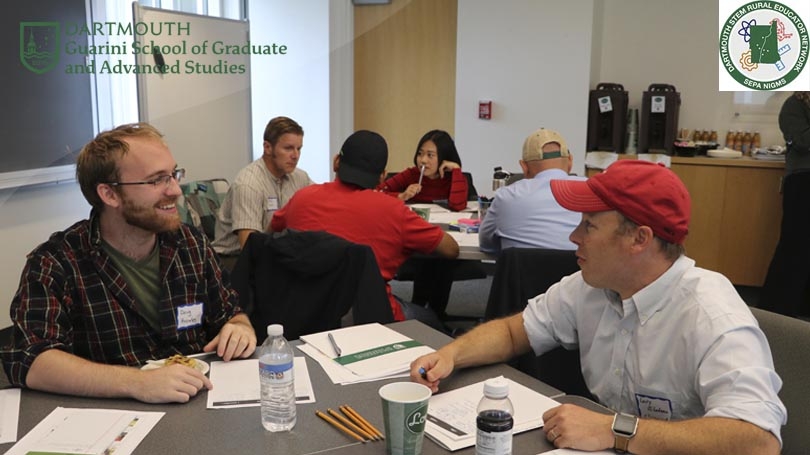
Graduate mentors met for their third full-day session with partner teachers to plan and develop material for sixth grade classrooms under the NIH SEPA funding mechanism.
"The program has been so fulfilling because we have now begun to really put ourselves back in our sixth-grade shoes." So says graduate student Sarah Valles, a graduate mentor on the National Institutes of Health (NIH) Strategic Education Partnership Award (SEPA) project. Sarah is one of ten graduate student SEPA Mentors selected in 2019 from dozens of applicants in the graduate programs at the Guarini School.
On Monday January 13, the mentors met with the project team and teachers from partner schools for their third all day session. They got down to the nuts and bolts of planning hands-on activties to be implemented in sixth grade classrooms during the first year of the five-year project. Three units were developed and will be presented as a mystery to be solved in order to keep middle school students engaged and guessing throughout the units.
"The collaborative nature of the manner in which we are coming up with lesson plans has sparked a creativity in all of us," says Valles.
Lisa Brahms, the newly hired Director of Education at the Montshire Museum of Science, and partner on the award, is excited to see the different perspectives from across the project team contribute to the content creation and delivery process."As a museum educator and a research scientist, I love to be engaged in research-practice partnership projects such as this one, that truly showcase and leverage the diverse perspectives, expertise and priorities of each of the partners."
Michele Tine, Associate Professor in the Education Department and co-investigator on the project agrees. "Collaborating with graduate students from so many different programs, faculty members, teachers, and staff from the Montshire Museum of Science is thrilling," says Tine. "I am fully confident that in the end our combined efforts will yield a curriculum far superior to anything any one of us could have created alone."
In a few weeks, grade six science teachers from Claremont and Mascoma districts in New Hampshire, and Barnet and Tunbridge schools in Vermont will roll out thematic content that will include videos, experiments, hands-on demonstrations, building activities, and more, all of which are being co-created by the project team, teachers, and mentors.
Educator Kevin Gianini, science teacher at Indian River School in the Mascoma River Valley School District, is eagerly anticipating the roll out. "It appears to me that all of our efforts are coming to fruition," he says. "I'm looking forward to teaching the unit in my class."
Materials and content for the new curricular unit will be finalized and adjusted through the course of years one and two of the project. They will be posted on the SEPA website and be made available to teachers from further afield through national teacher resource sites, such as the American Association for the Advancement of Science's (AAAS) Science Net Links.
Activities that comprise this project are supported by a Science Education Partnership Award from the National Institute of General Medical Sciences of the National Institutes of Health under Award Number R25GM129820. The content of this article is solely the responsibility of the author and does not necessarily represent the official views of the National Institutes of Health.